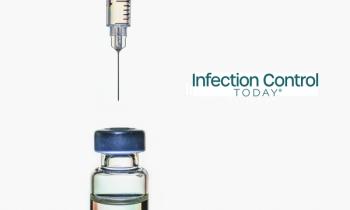
Paying for Prevention: How to Fix AMR’s Broken Incentives
In this provocative interview, Kevin Outterson, JD, LLM, explains why infection prevention benefits society but costs hospitals, urging fire department–style funding and PASTEUR incentives that reward diagnostics, stewardship, and antibiotic use.
Antimicrobial resistance (AMR) is not just a clinical crisis; it’s an economic one. That was the message from Kevin Outterson, JD, LLM, professor at Boston University and founding executive director of CARB-X, during a recent Infection Control Today®(ICT®) interview. His insights highlight a profound imbalance in how health care systems, policymakers, and payers value infection prevention and antimicrobial stewardship.
“Anyone who comes into the hospital with an infection or develops one there is going to be more expensive to the hospital,” Outterson explained. “The length of stay may double, and the costs can rise by thousands of dollars. But that’s almost the wrong question because the burden of AMR extends far beyond the hospital walls.”
The Hidden Costs of Resistance
Hospitals absorb immediate costs, including longer stays, more intensive care, and expensive antibiotics, but, as Outterson noted, the broader economic toll is largely invisible in financial systems built around short-term reimbursement. “The costs outside of the hospital are also amazingly significant,” he said. “Hospitals don’t get properly reimbursed for infections, and all of society carries the burden. Nobody is tracking the dollars and cents out there or making appropriate investments.”
That disconnect has real consequences. Lost productivity, long-term disability, and secondary infections among close contacts amplify the toll on families and economies. “If somebody doesn’t have a readmission within the 30-day Medicare window but can’t go back to work full-time, there’s still a productivity loss,” Outterson said. “If they infect others who become sick or die, those ripple effects never show up in the hospital’s books, but they are massive societal costs.”
A Broken Incentive System
“Here’s the sad fact,” Outterson said. “It’s not only more expensive and a longer length of stay when infection happens, but the hospital doesn’t get repaid everything it took to take care of that patient. So, it’s a loss for everybody.”
That financial misalignment directly undermines infection prevention efforts. Hospitals must often “make the case, both clinically and financially, to their clinical leaders and [chief financial officers]” that infection control is worth the cost, he explained. Yet infection prevention success is measured in what doesn’t happen, which is a hard sell to executives focused on the bottom line.
As ICT noted during the conversation with Outterson, infection prevention’s greatest triumphs are invisible: “It’s difficult to put a number on how valuable infection prevention is because you’re doing numbers against something that hasn’t happened.”
Outterson agreed and offered a compelling analogy that reframes the conversation entirely.
“Infection Prevention Is Like a Fire Department”
“We don’t expect the fire department to make money,” he said. “We expect it to prevent and put out fires, and we pay for that collectively. We should treat infection prevention the same way.”
Outterson argued that infection prevention delivers a societal benefit, not just a hospital one, and therefore requires societal funding. “In economics, this is called a positive externality; you’re building something that everyone else benefits from,” he said. “Unless you can benefit directly from what you’re doing, you’re going to underinvest in it. Infection prevention is a classic example.”
Just as fire departments are supported through public funding, Outterson believes the government should subsidize infection prevention across health care settings. “Instead of only penalizing hospitals for hospital-acquired infections, Medicare should reward hospitals for strong infection prevention and stewardship programs,” he said. “It would be a great investment for Medicare to throw hundreds of millions of dollars into infection prevention—not just hospitals, but long-term care, too.”
The One Health Connection
Beyond hospital walls, AMR poses risks to sectors as diverse as agriculture, trade, and food production. Outterson described a striking example from the agricultural world. “There was a new antifungal for crops approved recently that shares a mechanism of action with a new human antifungal drug that’s almost ready for [US Food and Drug Administration] approval,” he said. “Farmers were just doing their job protecting crops, but this could undermine a critical human drug before it even hits the market.”
This intersection of human, animal, and environmental health, which is the foundation of the
However, there are bright spots. Outterson pointed to
The Innovation Gap
As the founding executive director of
Prevention, stewardship, and innovation are not competing priorities, he emphasized. They are complementary. “If you do really great infection prevention and stewardship, it’s like slowing the treadmill,” he said. “You slow down the rate of bacterial evolution. That means the antibiotics we have today can last 100 or even 200 years instead of 10.”
The Policy Fix: Pay for Doing the Right Thing
Outterson described a structural flaw in the US reimbursement model that discourages hospitals from adopting new diagnostics and treatments—even when they save lives. “If a diagnostic costs $10,000 for the machine and $100 per test, those are additional costs that hospitals don’t get reimbursed for, at least for the first few years,” he explained. “So even if the device perfectly guides therapy, hospitals are financially punished for using it.”
The same problem applies to expensive new antibiotics. “If a hospital uses a $10,000 antibiotic to treat pneumonia, that far exceeds their profit margin for that patient,” he said. “They lose money for doing the right thing. That’s not a good capitalist incentive.”
To correct this, Outterson supports the
A Call for Balance and Fairness
Outterson’s message was both practical and hopeful: Infection preventionists, he said, are doing extraordinary work within an unfair system. “I want to give honor and respect to all the infection prevention and control professionals in hospitals and health care facilities who are doing what they need to do every day,” he said. “But they’re walking into 50-mile-an-hour headwinds because the system is financially designed to make it harder to do the right thing.”
As the global health community prepares for an era defined by resistance and resilience, his call to action is clear: “We need to change the way we fund infection prevention so that doing the right thing isn’t a financial penalty, but a societal priority.”
Newsletter
Stay prepared and protected with Infection Control Today's newsletter, delivering essential updates, best practices, and expert insights for infection preventionists.




